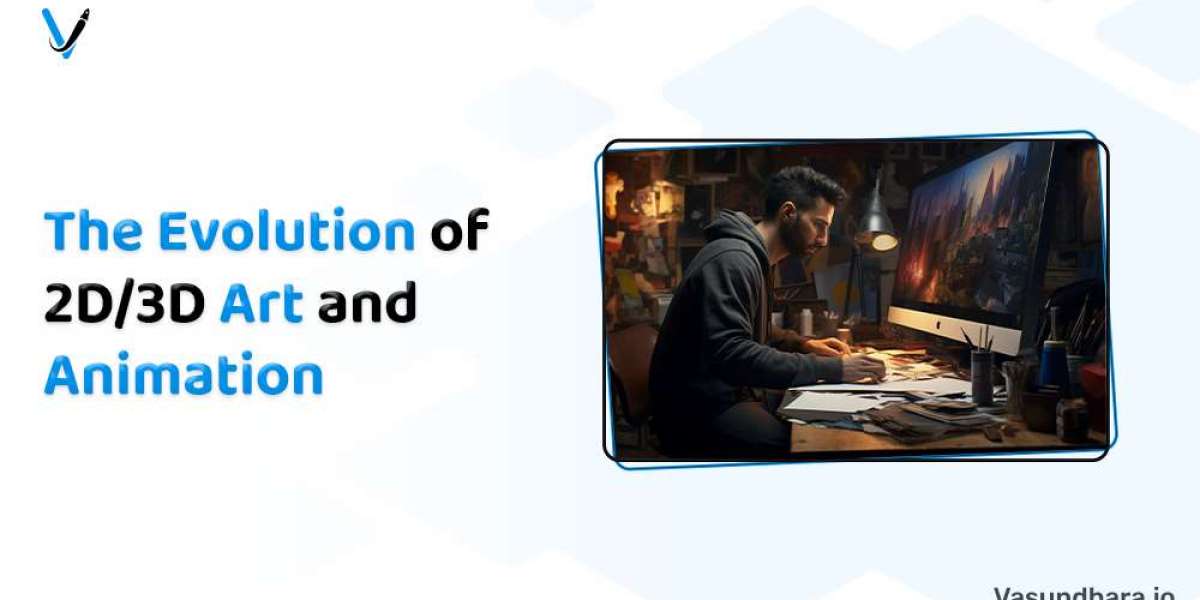Animation, which has progressed significantly from its inception, has developed from 2D drawings into the immersive 3D realism that we now appreciate.
During the early 1900s, animation emerged from rudimentary two-dimensional designs. Animators employed conventional methods, including stop-motion and hand-drawn animation, to generate the perception of motion.
Technological advancements facilitated the emergence of 3D animation, which enabled animators to generate lifelike characters and models that possessed texture and dimension.
As a result of the advancements made possible by animation software and instruments, the craft is now more accessible to artists and enthusiasts.
Nevertheless, animation transcends mere amusement. It is an integral component of brand strategy, facilitating the development of distinctive identities for businesses and organizations.
In the dynamic landscape of digital creativity, Vasundhara Infotech stands out as a trailblazer, pushing the boundaries of 2D and 3D art and animation.
This article will examine the development of animation, beginning with its inception and culminating in its influence on contemporary society.
2D and 3D art and animation in the digital era
Art and animation have become integral components of our digital experiences.
From captivating movies and engaging video games to immersive virtual reality environments, the power of 2D and 3D game art is undeniable.
These mediums not only entertain but also serve as powerful tools for communication, education, and expression.
As we embark on a journey through the history of 2D and 3D art, our goal is to unravel the intricacies of their evolution.
From the humble beginnings of hand-drawn animations to the cutting-edge world of computer-generated imagery (CGI), understanding this evolution of animation is crucial to appreciating the technological marvels and creative innovations that have shaped the industry.
Origins of 2D art
The roots of 2D art trace back to ancient civilizations, where rudimentary forms of visual storytelling were etched onto cave walls and pottery.
Over time, the art of 2D illustration evolved, finding expression in manuscripts, paintings, and prints.
The birth of animation can be attributed to the ingenious minds who experimented with sequential images.
From the early flipbooks to the groundbreaking work of animators like Winsor McCay, traditional animation techniques laid the groundwork for the vibrant world of moving pictures.
Emergence of 3D art
The transition from 2D to 3D was fueled by technological progress. The advent of computers in the mid-20th century paved the way for three-dimensional graphics.
As processing power increased, so did the possibilities for creating immersive and realistic visual experiences.
The 1970s marked a significant turning point with the introduction of CGI. Films like "Star Wars" showcased the potential of computer-generated visuals, hinting at a future where imagination was the only limit.
Evolution of 2D Art and Animation
Hand-drawn animation, a labor-intensive but captivating process, reached its pinnacle during the golden age of animation.
Studios like Disney brought iconic characters to life through meticulous frame-by-frame animation techniques.
Classics like "Snow White and the Seven Dwarfs," "The Lion King," and "Beauty and the Beast" continue to enchant audiences, proving the enduring appeal of 2D animation.
The advent of digital tools and software revolutionized 2D animation, making the process more efficient and accessible.
Software like Adobe Animate and Toon Boom Harmony empowered artists to create intricate animations with greater flexibility.
The rise of the internet and social media platforms provided new avenues for 2D artists to showcase their work.
Animated GIFs, short animations, and webcomics found a vast audience online, democratizing the art form.
What is 2D Animation
2D animation, short for two-dimensional animation, refers to the creation of moving images in a two-dimensional artistic space.
In 2D animation, artists work within the X and Y axes, creating characters, backgrounds, and other visual elements that exist on a flat plane.
This form of animation has a long history and has been traditionally associated with hand-drawn animation techniques, although digital tools and software have become increasingly prevalent in recent years.
The Evolution of 3D Art and Animation
The emergence of 3D animation transformed the film industry. Pixar's "Toy Story" marked a groundbreaking moment, proving that entire worlds could be crafted through computer-generated imagery.
The versatility of 3D game animation allowed for a wide range of storytelling possibilities.
The gaming industry embraced 3D graphics, ushering in a new era of immersive gameplay.
Titles like "Super Mario 64" and "Final Fantasy VII" demonstrated the potential of three-dimensional environments in captivating players.
The integration of CGI in movies became increasingly sophisticated, blurring the lines between reality and fantasy.
Blockbusters like "Jurassic Park" and "Avatar" showcased the potential of CGI in creating lifelike creatures and otherworldly landscapes.
The advent of VR and AR opened up new dimensions for 3D art and animation.
Virtual worlds became accessible, allowing users to interact with and explore immersive environments, pushing the boundaries of storytelling and entertainment.
What is 3D Animation
3D animation, or three-dimensional animation, is a digital technique that involves creating moving images in a three-dimensional space.
Unlike 2D animation, which works in a flat plane with X and Y axes, 3D animation adds depth and realism by incorporating the Z-axis.
This form of animation uses computer-generated graphics to simulate movement, allowing for more lifelike and dynamic visual experiences.
Vasundhara Infotech's Contribution
Vasundhara Infotech, a leading 2D and 3D animation company in Surat, has been at the forefront of innovation, seamlessly blending creativity with technology.
The company's commitment to pushing artistic boundaries while leveraging cutting-edge tools has set a benchmark in the industry.
From visually stunning 2D animations that evoke nostalgia to groundbreaking 3D projects that redefine realism, Vasundhara Infotech has a diverse portfolio.
Notable achievements include collaborations with major studios, awards for technical excellence, and a consistent commitment to delivering unparalleled visual experiences.
Vasundhara Infotech's commitment to technological innovation is evident in its adoption of AI-assisted animation, real-time rendering techniques, and exploration of new mediums.
By pushing the boundaries of what is possible, the company continues to shape the future of visual storytelling. Request for a FREE quote now.
The Future of 3D Animation
As technology continues to evolve, the future of 2D and 3D games holds exciting possibilities.
AI-driven creativity, enhanced realism through ray tracing, and the integration of blockchain for digital asset ownership are just a few trends that may shape the industry.
The convergence of virtual reality, augmented reality, and mixed reality could lead to entirely new storytelling formats.
Immersive experiences that blur the lines between the physical and digital worlds may become more prevalent, offering audiences unprecedented levels of engagement.
Conclusion
The journey from the early forms of 2D art to the immersive realms of 3D animation has been a testament to human creativity and technological progress.
Each era has contributed to the rich tapestry of visual storytelling, leaving an indelible mark on the way we perceive and consume content.
Vasundhara Infotech's contributions have been instrumental in pushing the boundaries of what is achievable in the realm of 2D and 3D art.
The company's dedication to innovation and artistic excellence has set a standard for the industry, inspiring others to explore new possibilities.
As we stand on the cusp of a new era, the future of 2D and 3D art is filled with promise.
With technological advancements and the ever-expanding creative landscape, the potential for groundbreaking visual experiences is limitless.
Contact us today to witness the evolution and unlock the door to endless creative possibilities








